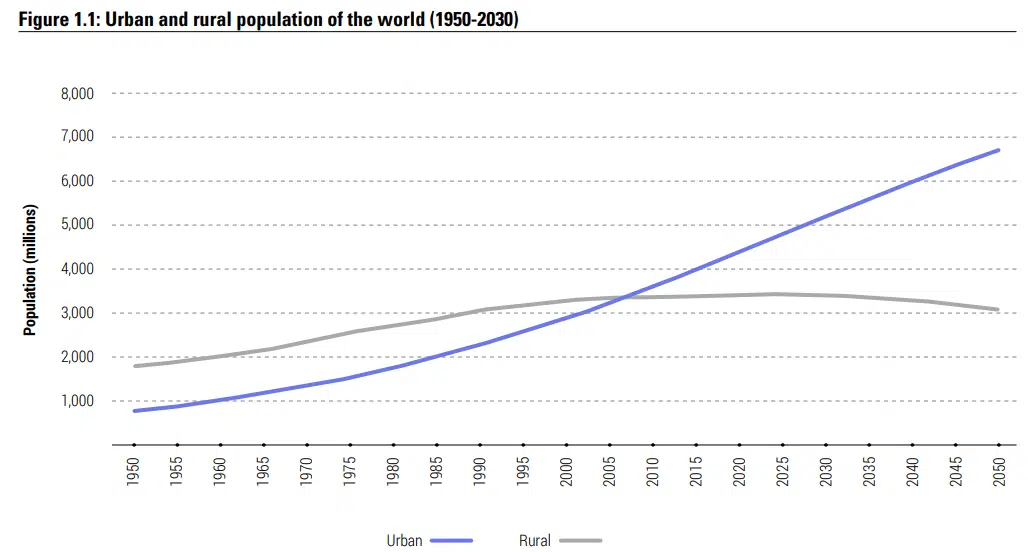Author | Marcos Martínez
This is a global trend. As different societies reach a certain level of stability and life expectancy, the number of children per woman in developed countries is declining. Longevity and fewer children mean the classic population pyramid has now inverted. This causes problems such as maintaining social security systems. But also environmental opportunities.
Why are there more and more older people?
According to figures by the World Bank, 65% of the global population is aged between 15 and 64 years. In 1967, this figure only just touched 60%. We are getting older, together. Vaccines, health systems and other medical advances have enabled life expectancy to increase.
We are not sure whether or not there is an age limit. At the moment, life expectancy at birth stands at a maximum of 78 years. The World Bank chart shows how all the continents are rapidly reaching that figure.Likewise, social stability and not needing to have children to look after us is making birth rates decline quite rapidly.
Once again, this is illustrated with figures in the interactive chart. Rich countries are having fewer children and there are fewer poor countries.The poverty gap is closing “rapidly”. In 1981, 42.1% of the global population lived in extreme poverty compared with 9.9% in 2015. The trend is clear: we will live in increasingly aging societies with around 1.7-1.9 children per woman.
The problems of an aging population
The charts below show different population pyramids around the world, Europe, Spain and Japan, in that order. The population inversion is undeniable, and this is generating a deficit in public systems. The reason is that the relative size of the active labour force is shrinking considerably with regard to the total.
The inverted age pyramid
If the trend continues in aged countries such as Japan, the active workforce (let’s say between 16-64 years) will reduce from 59.9% of the population to 51.2% in just five decades. Half the population will work and the other half will depend on pensions or on their family.
Furthermore, average healthcare expenses increase with age according to studies conducted in the US, Japan, Spain, etc. Furthermore, mobility and accessibility of older people is not as simple as for young people, therefore public transport, infrastructures or public spaces must be adapted as the population ages.
Is the aging population a problem?
It is a fact that the economic system, as it is today, will not be stable within a century. However, an aging population, together with high automation and the increasing number of people dependent in one way or another on the system, is another factor to be added to those proposing minimum income tax systems understood to be an extended pension.Together with the impact on the economy, which could lead to a change towards equality rather than a crisis, the population drop with regard to the environment cannot be ignored. According to recent studies, the Top 3 environmental impacts in relation to climate change are intercontinental flights, the use of cars and having children. This is no trivial fact.
Furthermore, the problems related to overpopulation will not be so important in a world with 1.9 children per woman and in which the average age of a woman when she has her first child is 31 years. The population would take over 180 years to be reduced by half, if it ever occurs. We are entering a phase of demographic stagnation marked by an aging population and by implications that have not been appropriately explored yet. Because the future of pensions may just be the tip of the iceberg.
Images | iStock/Shootdiem, Seth Wynes/Kimberly Nicholas, populationpyramid






















































